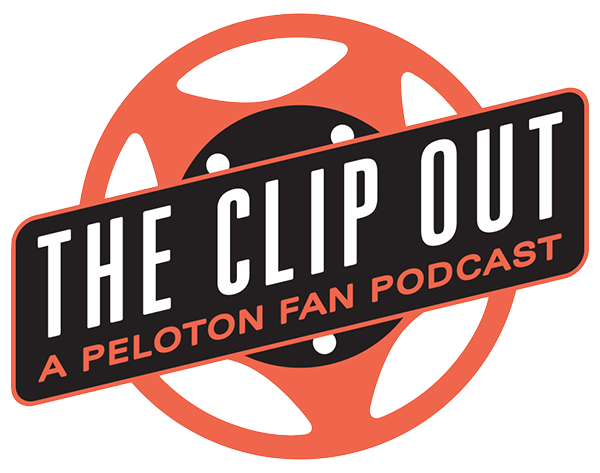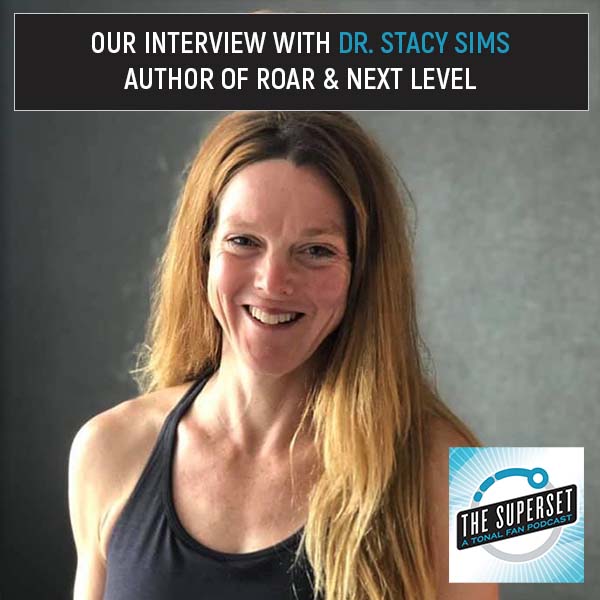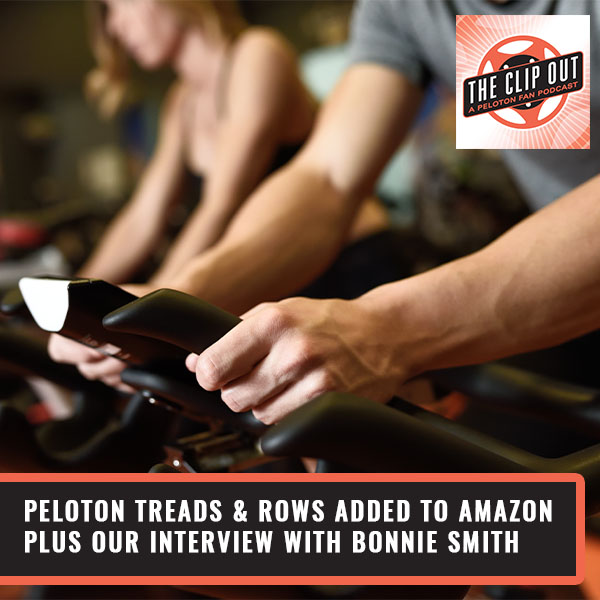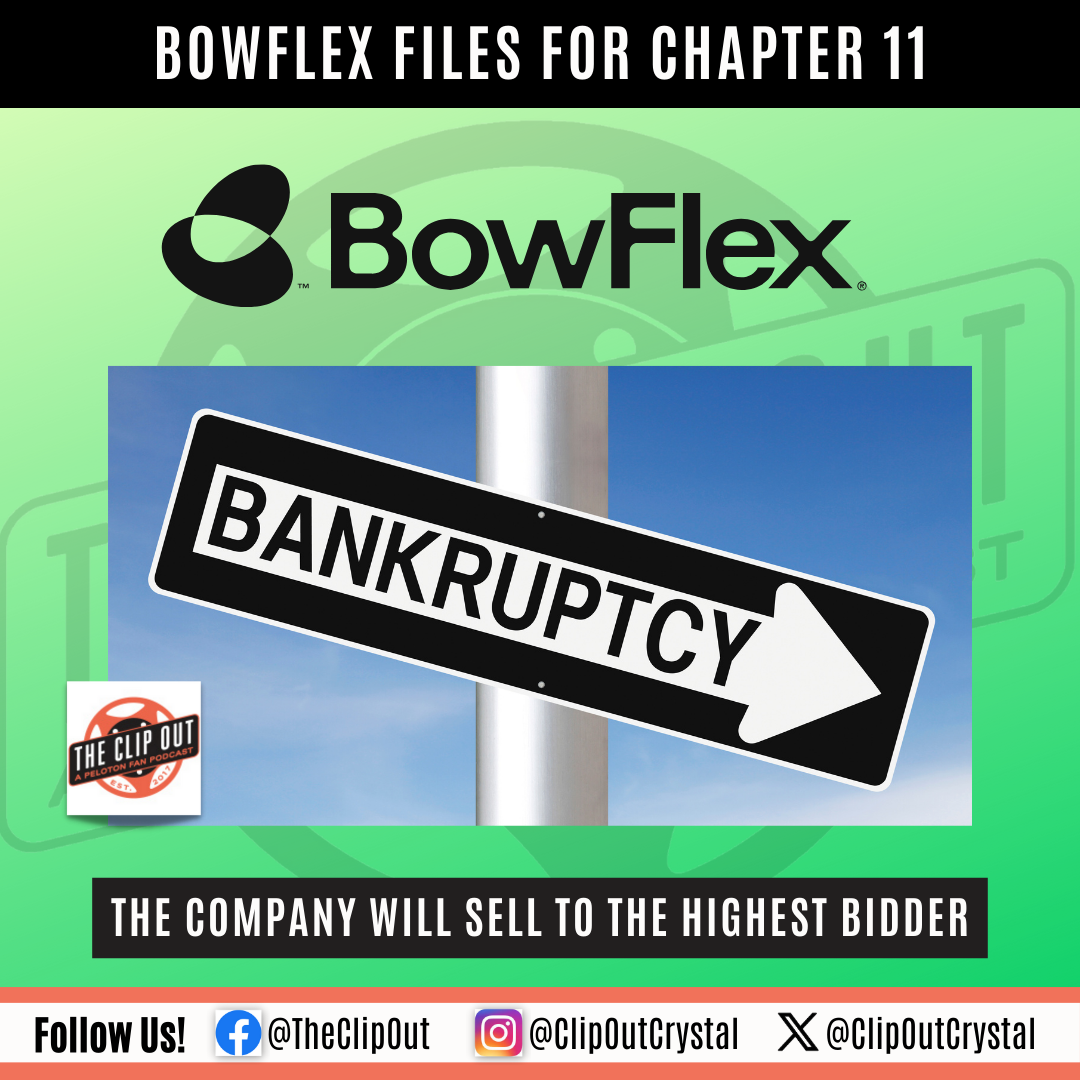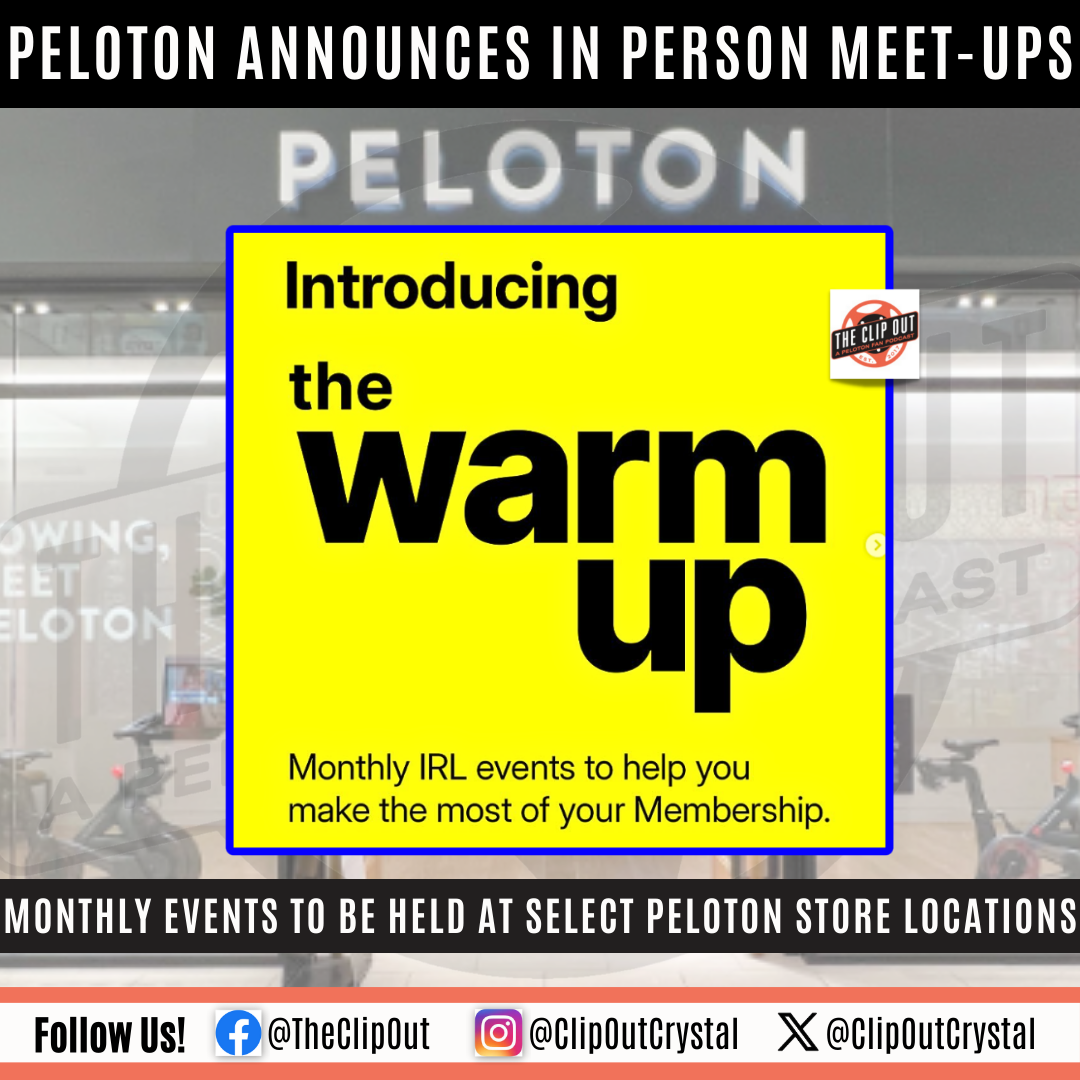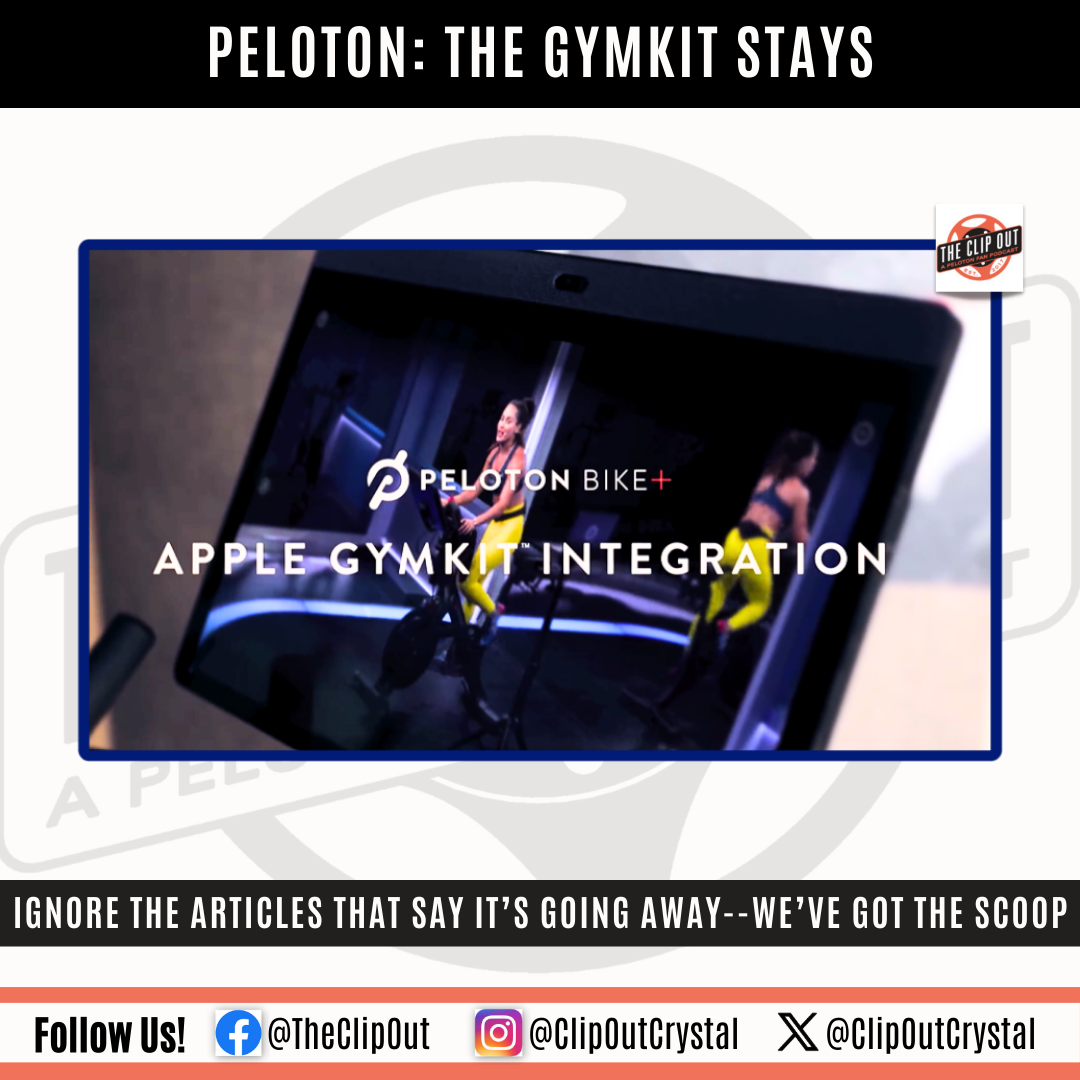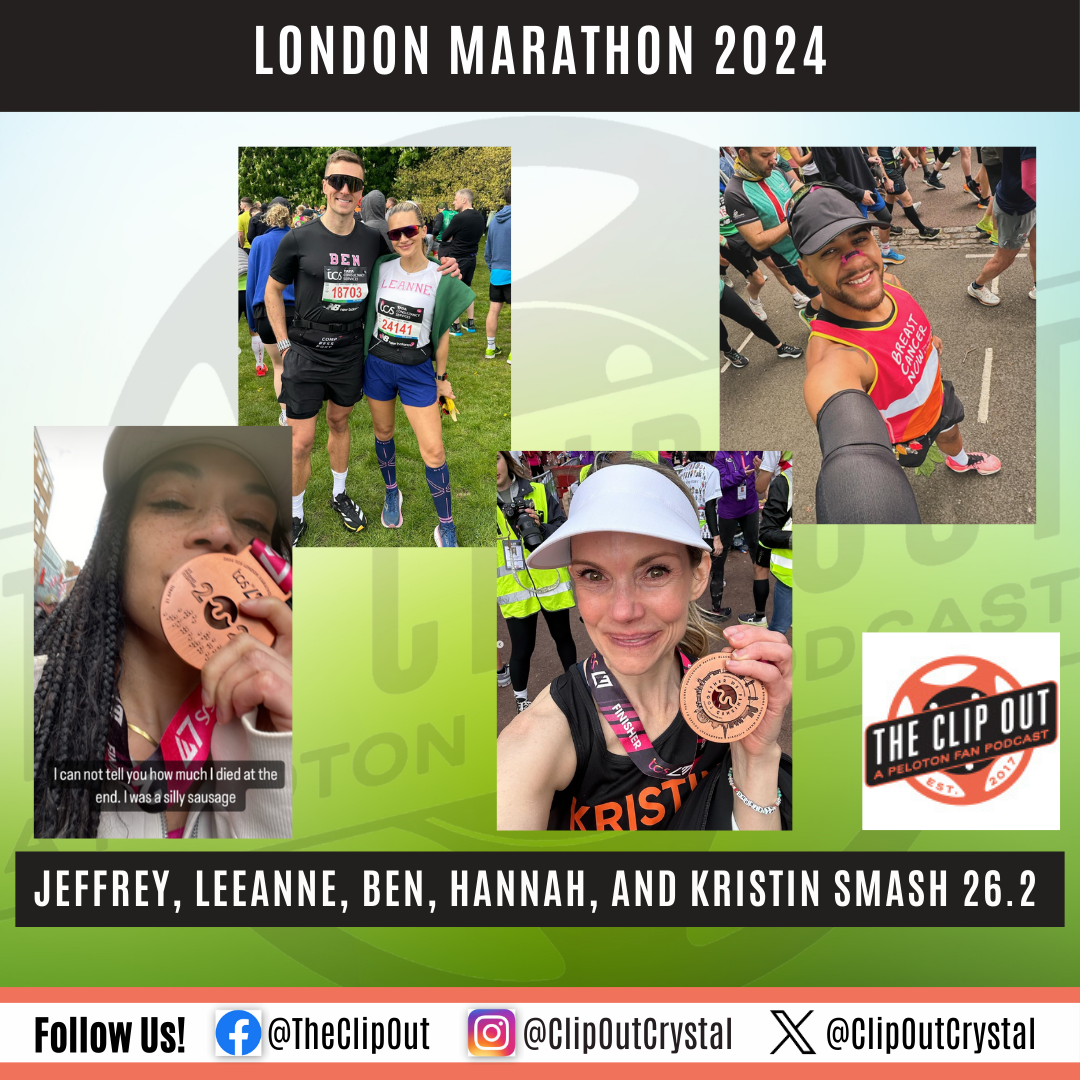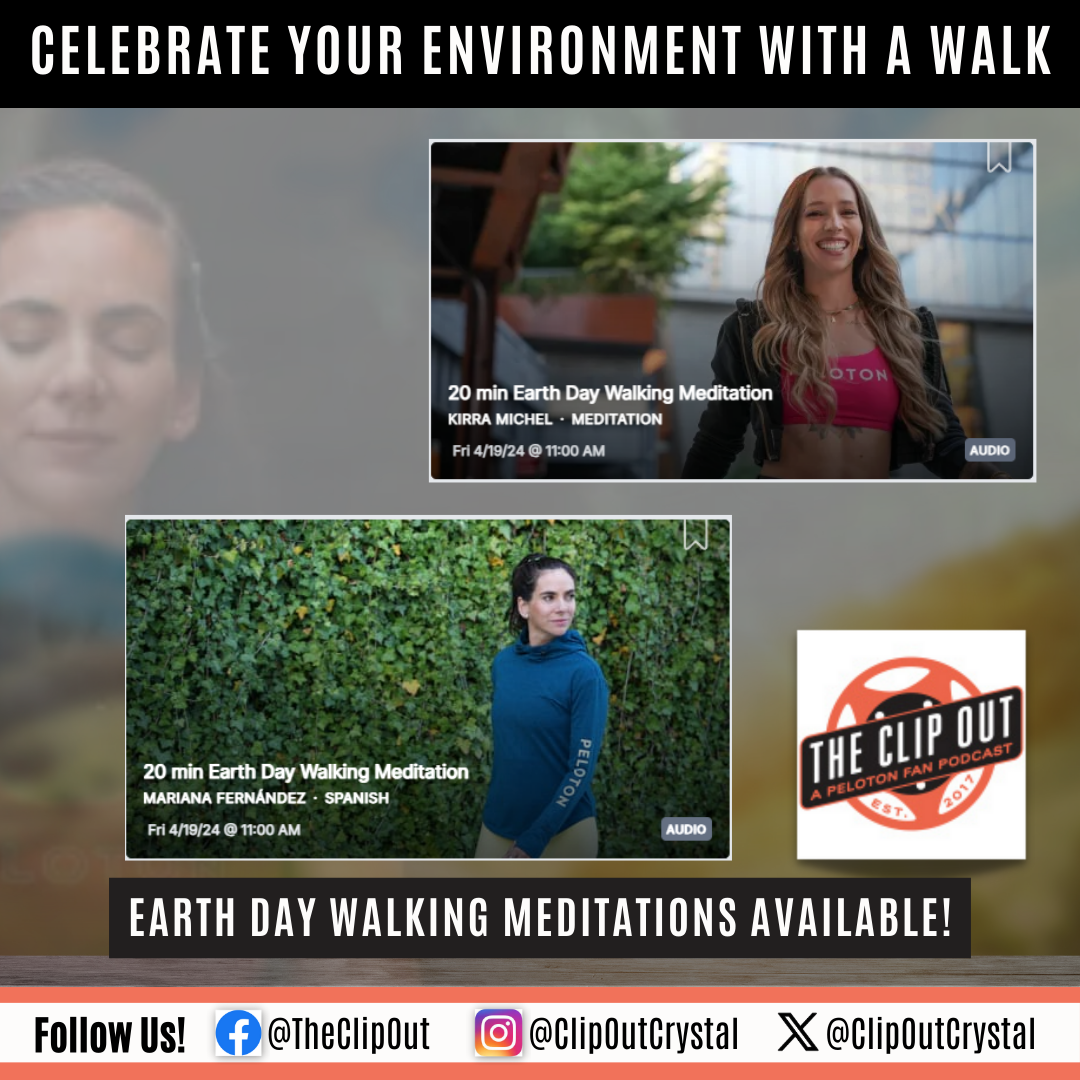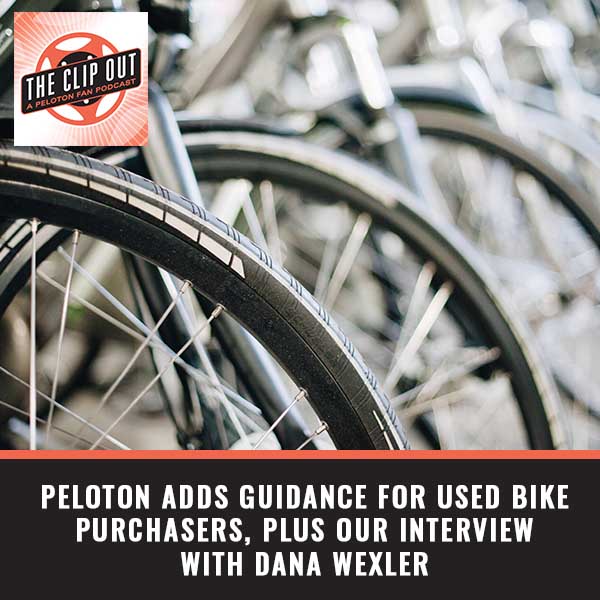Our Interview With Dr. Stacy Sims Author Of Roar & Next Level
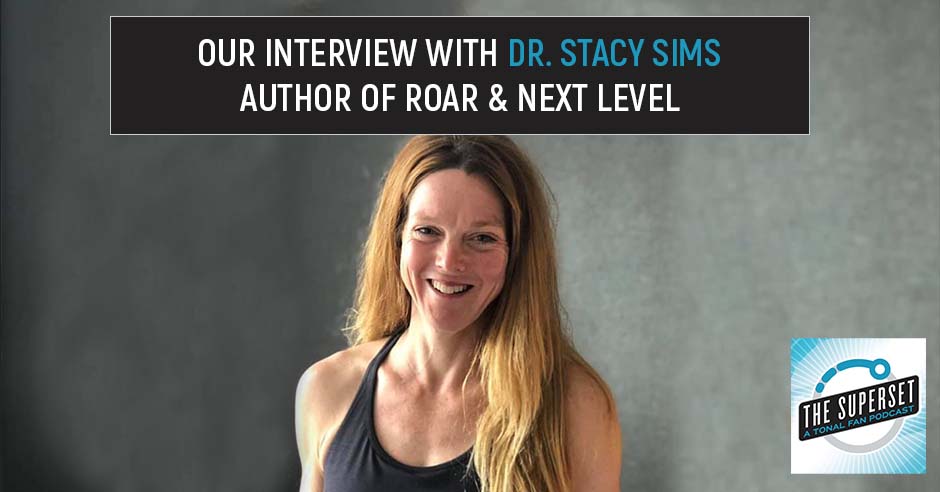
- From the Tonal Blog – How To Run Faster.
- The final member of the Strength Made Me campaign is revealed.
- Tonal is wanting feedback on the types of demos you prefer.
- Mashable reviews the Tonal.
- The new coaches go LIVE from NYC.
- An overview of all the new content.
- Coach Jackson has a touching post about his mother.
- You can meet the new coaches in the latest Tonal Talk.
- Read Between The Reps: How To Grow by Marcus Bridgewater.
- Tonal Moms group celebrated Pride month and more.
- The July Challenge is Let The Challenge Change You.
- Birthdays – Nicolette Larson, Kristina Centenari.
—
Watch the episode here
Listen to the podcast here
Our Interview With Dr. Stacy Sims Author Of Roar & Next Level
You are very excited about this interview. You were nerding out.
I was nerding out to every incredible level.
That was almost like the first time I met Peter Tork or Joel Hodgson.
My hands and my palms were sweaty. It was real. The nerd in me was out. It was because we were interviewing the great Stacy Sims. I have such a girl crush on her. She’s amazing. I want to be like her when I grow up.
For people who don’t know or who are like, “Why do I know that name?” she wrote the book ROAR and Next Level, which Tonal was a read between the rep selection a little while back, and you devoured it, and then devour the next one and found it very informative.
Also, Dr. Stacy Sims is one of the advisory board members for the Tonal Strength Institute. She is just the foremost person on all of the studies being done about women and how we react to exercise and nutrition and how that is different than men. Her whole TED Talk is Women are Not Small Men.
I’m thankful for that. Besides a wonderful interview with Stacy Sims, what do you have in store for people?
We are going to talk about the exciting new features that have been dropping. We are going to talk about all the places that Tonal has been in the news. Plus, there’s new content. We have some updates for the coaches on what’s going on with them. Tonal Talks have happened. We got to talk about what’s going on with the Book Club, just in case you missed it.
Before we get to all that, shameless plugs, don’t forget we are available on Apple Podcasts, Spotify, and Google Podcasts, wherever you find a podcast, you can find us. While you are there, be sure and follow us so you never miss an episode. Maybe leave us a review so people that come along after you, know we are worth checking out. You can also find us on Facebook, Facebook.com/supersetpodcast, while you are there, like the page and join the group. Of course, you can watch all of these episodes if you are inclined on YouTube, and our YouTube channel is named after our original podcast, The Clip Out. It’s, YouTube.com/theclipout. Swing on by there, and you can actually stare into our deep, whatever color eyes we have.
It’s hard to tell from these cameras.
Anyway, there’s all that. Let’s dig in. Shall we?
—
From the Tonal blog, an interesting post about how to run faster. I know this is near and dear to your heart.
It’s actually a whole new series that Tonal is doing called the Why Behind the Workout. The first one that they had was the Strength for Runners Program with Coach Woody. They talked about why she designed it, specifically the way she did. This is something I am very excited about because it explains that Woody’s and all of the different workouts were very simplistic but so effective. It’s a lot of unilateral movements. You are working on strengthening each leg, and each arm individually, which overall is going to make you a better runner.
I said in three seconds an incredibly over-simplistic version of how this blog explains it. The blog goes through detail and explains it much better than I did. The point is they are going to be having the series on a lot of different workouts so that you can understand why the coach designed them the way they did. That’s incredible.
I really liked the idea behind the one about how to be a better golfer. I could not care less about golf. I’m like, “That’s something I’m sure a lot of people want to know.” It’s not just about the momentum or your follow-through. You also need some strength going on there, and I’m sure it probably also helps with balance and things like that. That’s a very clever idea behind a program, and seeing that matriculate out to different paradigms is pretty cool.
I agree when it comes to golfing in particular, it’s really interesting because people, in general, never move in a side-to-side fashion. We have no reason to twist unless you are making a point to do it.
Also, if you are a chubby checker.
If you are a person who is looking to like, “Just start with golf,” you have really nothing that you need to get started if you don’t exercise at all. Tonal is so great about bringing all those things together.
Especially, I feel with golf; and there’s this notion that like, “You can have a beer belly and sit out there.” You can. Tonal has been doing this thing, the Strength Made Me campaign, where they spotlight different members of the Tonal Community and come upon their last one. For this campaign, my guess is I wouldn’t be surprised to see it come back but for the moment, their final one.
He’s also known as X. We are going to call him X.
X easier for us.
I won’t mess it up and be incredibly rude, which is what how I always feel. It’s really cool because he transitioned and wanted to look the way he feels on the inside. He feels like Tonal has helped him do that. That is so empowering and a really great message. We all want to feel on the outside the way we feel on the inside. That’s always the goal. That’s amazing.
I wasn’t a big fan of this video because of the guys doing that front barbell deadlift thing with your throat that I can’t stand that. I get so mad that he’s over here like, “What about it?”
X has channeled his confidence into becoming a voice for those who need one as transgender rights activists. You can hear all that story. It’s all out there over on Tonal’s official page on Facebook.
—
Tonal is looking for your feedback and would like to know your thoughts on having the coach do the moves with you versus kicking over to demos of different coaches doing the moves because apparently, that’s really important to some people.
It really is. There are some heated debates about this. Kate said, “There have been some lively threads in the community.” That’s a very nice way to put it. God bless Tonal for allowing people to air the way they feel. To always be supportive of that is very important to do.
Is this their version of the pause button?
I think that it is, yeah. It’s interesting because depending on when you got your Tonal, you don’t even know that there’s another way. For those of us, who have had our Tonals for a while, there was only always one way to do it, and that’s where the coaches had other people demo their movies.
It would cut to be a roll of different instructors, and it rotates sometimes like you might have Coach Jackson doing. You might take a thing with coach Liz, and then Coach Jackson is doing the deadlift. The next set of deadlifts, it could be Nicolette or Liz herself or whatever.
They started doing kind of these live beta workouts. The idea was that the coaches doing the workout with you and those were very popular, so they started doing more and more of those. They want to figure out a good way to make distinctions as they post these, to be able to say, “There’s this kind and this kind.” At a glance, you will know what they mean by their labels. That’s what they are looking for feedback on. It’s really good for everybody to give that feedback. I’m glad that it doesn’t sound like either is going away. It just sounds like they are looking for a way to make it more clear at a moment’s glance.
My guess is when the coach is doing it with you, people feel more like they have an actual personal trainer. Do you have a preference? It’s because I do.
It’s funny that you say that because I have had a personal trainer one time in my life, and it was not a good experience. When I did, the personal trainer was not working out with me, so I don’t even think that’s true. That is the mindset, though. Anyway, I don’t have a preference. I like both, and I like them for two different reasons. It sounds like you have a very strong preference.
I like when it toggles back and forth.
Why is that?
It’s because, and maybe this isn’t always true, I’ve found at least in the ones I’ve landed on where the coach does it with you. If you do your set a little faster than the coach, you can’t just go to the next thing. It seems more time-based.
That is a good point. If you are doing a workout like you are doing bicep curls for 30 seconds, let’s say. If you get done with eight reps in 30 seconds, you can’t move on until they are done.
If it’s a time thing, you’ve got to wait for it to start too. You can’t just go to it. A lot of times, I will skip the intro, especially if it’s one I’ve done before, where I’m like, “I’ve heard the spiel. I’m good, not to be a jerk.” I will hit the skip and drag. I shouldn’t apologize. They gave them the opportunity to do it. I’ve noticed if the coach is doing this with you, you don’t have those. I’ve also noticed if the coach is doing it with you, it seems as if you don’t have as many opportunities or maybe not at all to swap out a move. I have been avoiding them because I like to swap out moves. Especially if the affirmation barbell lift which should be banned.
Other people are able to do it fine, Tom.
This is America. I don’t care about other people. I don’t like it. It should be banned. That’s America. That’s how this works here.
Not in Tonal Community.
I will always swap that out for a goblet squat every time. When the coach is doing with me, and all the worst is when they don’t give you that to day three. I’m like, “Now I’m done with this program. I’m not going to do it.” I totally dumped the program and started over.
Here’s a tip, though. You can run through all of the workouts before you start it.
Yeah. Now I do that.
Don’t just jump in.
I don’t think to do it. I’m like, “This looks good,” and then it pops up on me. Anyway, I thought it would be interesting to hear what you think.
I like when the coaches rotate through because that’s my first experience with Tonal. It’s almost nostalgic. It feels comforting to me but also, the coaches sometimes do the same moves slightly differently. I like seeing that. I like seeing how you can do some of the moves a little bit, just a tiny turn of your arm a little bit differently. That might be a little more comfortable.
That’s a really good point. There have been times, especially because I have no knowledge of working out except what Tonal has put in front of me. Sometimes if they are doing a stretch or something and somebody puts their hand on their ankle, and somebody puts her hands in front of them, I’m like, “That must be the way you do it. I better not.” I then saw somebody do it the other way. I was like, “There’s a little bit of wiggle room here but that’s okay. I didn’t screw it up.”
Here’s another thing. I believe Coach Paul is the fastest at doing jump squats. I don’t like doing jump squats with him because he makes me feel bad. I can’t go as fast as him, and the other instructors go at what I would consider a human pace. Whereas Coach Paul is such a good athlete.
I don’t know if I’ve seen him do gyms. Coach Allison, here’s what she will do.
What does she do?
I got this one that I have banked all the time because it’s like a quick cardio thing when I need it. You will do jump squats and be on your fourth set of them. You start and are in sync with her. At some point, she shifts and you are not going to be in sync with her. I’m like, “It’s a four-set, and you are pulling this crap.”
You should have done that back in set one.
I’m like, “This is not fair.” The first couple of times, I’m like, “I’m keeping up. I feel pretty good about myself,” and then she’s not even sweating. It’s rude.
There’s another one where you have to do jumps behind like the lateral bench jumps where you jump with your feet in theory above the level of the bench. It’s very much a theory. Coach Woody, good Lord, she’s like a Jackrabbit. How on Earth is she keeping her feet up in the air over and over for 45 seconds straight like that?
She’s part reindeer.
I don’t even know. I like it when the other instructors come in because there are differing levels. It’s slight. They are still better than me but at least I have a little hope that I can someday get there.
There are a lot of marketing dollars and not a lot of science in almost every product out there. Click To Tweet
Also, Mashable, which is a pretty big website, had a review of the Tonal, and they seem to be fans.
In fact, the bottom line says, “Tonal is like an at-home personal trainer that gives you weight recommendations, helps you fix your form, and tracks all your progress.”
If you are reading this, you probably already know that. Although some people do check us out before they finally pull the trigger on getting a Tonal. It’s also nice to see Tonal popping up on major outlets like Mashable.
It really is. I love seeing them get the recognition they deserve. By far, in my opinion, they are the best strength platform out there, especially for people who don’t know what they are doing like me. I feel a lot more confident about it now but I wouldn’t have gotten there without Tonal. I’m a big fan. I don’t know if you know that.
It would be weird if you weren’t.
That’s fair, considering it as a fan show.
—
We have new content and new coaches.
It’s so exciting. June 22nd was the big day. We have a whole five new coaches that are coming at us from the East Coast. There’s a whole new schedule. I absolutely adore it. Five days a week, you have Monday through Friday and have so many classes that are live. It’s incredible. I don’t know how they could get much better.
They will find a way.
Coach Woody’s power hours are back at 9 blocks in 1 power hour. It’s crazy.
That seems like a lot.
It’s an intense class. I love that they have these classes to fill in. If you are not a person that likes to take programs, and you just want to wake up, go to your trainer, and do a good workout every day, they got you. You don’t have to think.
There are also tons of new non-live stuff for you.
There’s a new program from Coach Allison back at it. It came out at the end of June, three times a week. It’s for the beginner. It’s great because it’s one of those programs two weeks long that helps you get right into strength training. There are new quick fits. We have Planes and Gains with Coach Brendon. It’s an intermediate full-body, fifteen-minute workout. Lean muscle with Coach Jackson, intermediate lower body, and it’s twelve minutes long.
There’s new cardio, Sweat, and Succeed with Coach Gabby. This one is full-body, 30 minutes. You are going to get a great sweat on in 30 minutes, not to mention a new recovery. There is a blissful stretch with Coach Gabby beginner, full-body, seventeen minutes, and then a new efficient warmup with Coach Pablo. This one is seventeen minutes and a full-body, which is a really thorough warm-up. New yoga, all levels, full-body, 34 minutes. It’s called Yoga Grounded. A new grace meditation, all levels full-body, fourteen minutes.
There’s more.
It came on July 5th. We must trust your strength with Coach Woody and keep in mind that this is one of the new program pluses. Now I think that when we are done talking about this, we need to just touch on program pluses and how amazing they are. This can be for all levels because you can customize it, get lean, and it’s 4 times a week for 4 weeks, and there’s another new program, beginning strength fundamentals with Coach Amy. That one is 3 times a week for 4 weeks, and it’s all about building muscle.
This is perfect if you are coming out of an injury, need to take it easy or you are getting mobile again, then we have a new active recovery light leg day with Coach Nicolette. I didn’t know she ever had a light leg day. Metabolic boost with a new quick fit. It’s fifteen minutes full-body with Coach Trace and then glute burnout with Coach Paul. That is a lower body, ten-minute advanced, then Core Essentials with Coach Nicolette. That is a beginner core, new cardio-cardio its core and cardio challenge with Coach Jackson and then cardio for all with Coach Nicolette. That’s fifteen minutes, not to mention there’s new mobility, Coach Liz, fifteen-minute full-body, and then beach bar with a Coach Gabby that one is fifteen minutes.
New yoga, 22 minutes, escape and exhale, and then calm connection with Coach Francis also full-body, sixteen minutes. There are a billion options. Programs plus, and I love these things. First, you can pick whether you want beginner, intermediate or advanced, then for every single workout, you can adjust that. Let’s say you start off today and are intermediate. Tomorrow, you may not be feeling it. Tomorrow is a beginner day, and that’s okay. It actually switches.
It dynamically changes the workouts that are going to be in that workout. Not to mention you can change the duration anywhere from the shortest. It has four different options for every single workout. If you are feeling extra, you can do an advanced, the longest settings. It’s going to be 75 minutes. You might die but it’s going to be a fabulous workout or you can be like, “I’ve only got 30 minutes now. What can I knock out?”
That came in handy for you. You were super busy and didn’t want to skip a day in your program but if you are like, “I can dial this back to 30 minutes, and at least I got something in,” then you can get back to it.
I would have just not done anything that day if I didn’t have that option in. It made me feel good because otherwise if I did a workout, I would have had to do a different workout before. This allowed me to stay in the program, make progress on what I was doing, and still feel like I got a fantastic workout on a plan. It checked all the boxes.
It’s a great addition.
It is very exciting. They have six of those programs now.
—
There was a really nice poach. There was a really nice post from Coach Jackson about his mother.
He talked about working out like your life depends on it. His mom sadly passed away in 2021 when she was 70 years old. She had a lot of different health issues, high blood pressure, heart disease, sleep apnea, restless leg syndrome, anxiety, and depression. He felt like that over time. He tried so hard to encourage her to work out and just didn’t know how to help her take her health and fitness more seriously.
She was obviously a wonderful mother to him despite that but he wanted to help her with that. He wishes that she could have had access to a Tonal back whenever she was younger, would it have helped? Would it have made a difference? He talked through all of the different kinds of facts that go into how heart disease is a leading cause of death for men and women. There are so many problems that we can overcome just by moving, whether it’s cardio, whether it’s strength, just move.
It’s a very positive message. He ends it by saying, “As I said earlier, I couldn’t save my mom. All I can do now is prevent as many people as possible from suffering the way she did and the way my family has as a result. I will never forget what she said to me in her final days. She said, ‘Jackson, I want you to learn from the mistakes I have, and now I want you to do the same.'” Work out now as your life depends on it because it does.
Seventy is not that old these days.
My dad just turned 70. That makes me so sad. It is a good incentive for all of us to keep moving and working out. I really appreciate that he shared such a heartfelt, vulnerable post about his mom.
—
We talked earlier about the new coaches but if you just can’t get enough of them or if you haven’t gotten any of them yet but you want to find out who they are, there was a Tonal Talk for you.
This Tonal Talk is taking place at the end of July.
We’ve missed them in there in the past tense.
I have been looking forward to this one, so I pulled it out because they knew it was coming. It has all of the New York City coaches. They are going to all be there together. Wednesday, July 27th, 7:00 PM Central because we are in the Central Time zone. For all you California folks, that’s 5:00 PM for you. 8:00 PM for the East Coast.
It would probably be the second most important Tonal Talk they’ve ever done.
Right after yours, is that what you are saying?
It was ours. You were on there too.
—
We have another new book for people or we don’t but Tonal does, and we will talk about it.
It’s because there is a new community challenge this month in July, there’s also a new book, and it is called How to Grow by Marcus Bridgewater. Don’t forget, there’s a whole group where you can follow the Tonal Book Club, and you can read along and answer questions together with everyone there.
—
Now, this is a good example of a Tonal Talk that already occurred, Tom. This one happened on June 28th, at 5:00 PM Pacific Time and 7:00 Central Time. It was all about celebrating Pride Month’s paths to motherhood and being the strongest as moms. This was part of the Tonal Mom group. That is where it took place, and they were talking to special guests, Jenna Glazer and Elise Bacolas.
—
There were not 1 but 2 birthdays to talk about.
This is because we have those new coaches. We have Kristina Centenari. I’m going to have to know all the coache’s names again, Kristina. She’s one of the new New York coaches, and her birthday was June 27th.
Also, Coach Nicollete.
Also, on June 27th, our beloved Coach Nicolette.
What are the odds, which 1 in 365? Those are the odds. Someone is going to say 2 and 365 but actually, it’s 1 of 365 because one date is stationary.
Tom, we are not doing Math on here. You are going to have to do your own little Math show.
Keep in mind that I am a Mass Communications major.
This is why we should not be talking about Math.
—
Joining us via the magic of Zoom-Tube is Stacy Sims, MSC, PhD, a forward-thinking international exercise physiologist, and nutrition scientist who aims to revolutionize exercise nutrition and performance for women. She has directed research programs at Stanford, AUT University, and the University of Waikato, focusing on female athlete health and performance and pushing the dogma to improve research on all women. You might know her from her TEDx Talk, Women are Not Small Men, or her hit book, ROAR. It’s Dr. Stacy Sims.
Not only your book ROAR, which I loved, by the way but your new book Next Level. It’s awesome.
I haven’t read ROAR but I feel like I have.
I talk about it all the time.
Every three pages, Crystal would give me a recap. She will be like, “Get a load of this.”
She gave you the cliff notes.
I did. The research you were doing is fabulous. I feel like I have been looking for your information my entire life. I’m a person who, as I go through my monthly cycle, struggles so much. I get anxiety. I get the depression. I get all of the things and never realized that there were things that I could do to offset any of that. As I’m getting older, I haven’t been officially diagnosed but I feel like I’m in perimenopause, and my husband laughs at me.
I look like I’m being a total normal dude being a jerk. I laugh because she has been saying this to me since the day we met, and we have been together for over a decade.
If you’re able to mitigate stress, your body has a whole room for adaptation. Click To Tweet
You never know. All I know is my cycles have changed.
It could last for fifteen years.
Thank you. A doctor said it, Tom.
I want to set a marital dispute but I will solve it for you.
I was overjoyed when I found out that you were working with Tonal, and there’s Tonal Strength Institute. I’m a Tonal user. I have been using my Tonal for a few years now. We’ve had the show for around that time and adore it. How did you get involved with the Tonal Strength Institute? How did that come to be?
Molly Ritterbeck is their senior content advisor. Through the years, we’ve done a lot of work through freelance stuff. I’ve known her forever. They were looking for someone who specialized in female athletes and understood the lifespan and Molly was like, “I know the person. If you haven’t heard of heard of her, it’s a shame because here’s her book. Here she is,” then I got an email from Troy going, “We are interested in all the stuff that you do. We are putting together this advisory board and want to know if you would want to be in on it?”
I was like, “As a matter of fact, yes, because it’s a fantastic platform. You have a lot of women that use it, and let’s make sure that the women are doing what they should be doing.” It’s exciting to see everything that’s happening with Tonal and how rapidly they are growing, changing, and the uptake and the success stories of it all. It’s cool.
I was always the person who went to the gym and felt very intimidated by the weight section. Tonal has completely changed my life in that regard. I have been super excited to be able to use it. I know that you were saying you do not personally get to have a Tonal but that’s because you typically are in New Zealand. They don’t have Tonals outside of America just yet.
We are lucky enough to come into your one for the lab because we are doing research but the lab is two hours North of where I live. I was like, “Do I get it delivered to my house or use it for research?” They are like, “It’s for research.” When I do get up to the lab, it’s great because I’m like, “I’m using it. I got to test it out.”
New Zealand doesn’t have Tonals. Doesn’t have COVID.
Wrong. It has COVID but no Tonals.
What research do you do like on it with a Tonal from a day-to-day standpoint? I’m trying to envision what that looks like.
We have a couple of projects going. One is looking at feedback for novice individuals who have no background whatsoever in strength training. A lot of the feedback cues that are already available are all what worked for men, what motivates men, so we want to understand how a woman who approaches Tonal or an AI-type strength training machine and gets feedback and cues. “What’s going to motivate her? What’s going to keep her uninjured?” That’s one we are looking at.
Comparing personal trainers versus videos versus personal feedback cues and collecting that to see what gives the best results. Another project that we are getting ready to start is in the peri and post-menopausal set. Looking at protocols and traditional strength training like the 3x10s versus power-based training and seeing what the outcomes are. The goal for Tonal is to have specific programs based on age group and where you are in your life.
If you are a novice and completely like, “I have no idea where to start.” They do that well but we want to dial it in to have more of a positive scope on that. We know that power-based training is good for peri and post-menopausal women but when you approach the Tonal or any strength anywhere in the gym, the Tonal, anything else, no one tells a perimenopausal woman.
You are going to do better lifting heavy and doing a 3×5 rather than doing your 8×10 arms program. Trying to have definitive data to show longitudinally what happens when you do a traditional program that has been instigated through the male protocol, the male lens that people status quo to something that’s dialed into a woman in her particular phase of life.
With the first one, you talked about in terms of changing some of the feedback so it might be more helpful for women. Has there been any obvious low-hanging fruit of something like a tweak that you would suggest?
One of the obvious low-hanging fruit is the language that you use. When I first worked or started with Tonal and was looking at their programs, they have things like lean up, lose weight, and all those things that don’t represent an end goal or empowerment. I work with a sociologist who’s a close friend and colleague. We are always looking at the nuances of language, especially when you are entering into a masculine environment.
The first low-hanging fruit is looking at the positivity around the language and not instigating a masculine trait in that feedback. Like Crystal was saying, she avoided the gym because it was so uncomfortable for her. When you walk into a gym, it’s set up that way. All the masculine aspects and the big testosterone latten things are in the back corner of the squat rack, and that’s where we see all the guys. The women are all in cardiovascular machines. Even in the intake form, they will ask the guys, “What are your goals?” To build muscle, bulk up, and get powerful. For the women, it’s losing weight and toning up.
It’s this huge dichotomy right there when you are looking at the intake, and that’s how the gyms are set up. When you are taking that representation into a home gym, you don’t want the same feeling. This is where we are looking at, “What’s the language? What’s the feedback? What protocols? How do we say, ‘What is an end result?’ What is failure? What does failure look like? What does failure feel like? What kinds of recovery do we need?” We know that women need less recovery between reps and sets than men do. What does that look like? It’s a whole new looking from a female environment and a female language to improve everybody’s experience.
As a guy, I don’t like that part of the gym either.
You are supposed to be at home there.
He’s not at all. He has never been a person who worked out until we got the Tonal. Tonal is the first workout Tom has ever done in his life.
That’s a good success story right there.
It is. He’s lost 70 pounds and gotten so much stronger.
The scale is an easy metric but also compositionally. I have been this thin before but I didn’t look like this in a good way. It has made a difference in that regard.
I am super fascinated by your new book, the Next Level. I have been devouring it. One of the questions I had for you, this is curiosity on my part. You always have these make-overs that you have in the middle of the book. You talk about how you work with people specifically to help them. I’m curious, who gets to work with you? You are so busy. How do these people get chosen? I feel like there has to be a lottery or something?
I am particular. I will work with the bulk of it is Olympic athletes, especially in the toxic Olympic training center environment where they are looking outside for help. I work with a lot of women who approached me and have gone through breast cancer or have some economic issue. I work with another woman who had set up the oncology unit at one of the major hospitals because she’s learning so she can pass it on. It’s always looking at how big a reach can I get with these people. If they are a touch point for lots of others, then I’m like, “This is great. It’s a self-facilitating. It’s a teaching moment,” so then you can carry it on.
I love how you choose. That’s great.
Planting seeds.
Also, I have been super fascinated by the different adaptogens that you talk about in the book. You have this whole section where you talk through about all the different kinds there are and you suggest like, “Here’s a good starter one. Here’s a good one depending on your goals,” that thing. I’m curious what your thoughts are on all of the different products that have been coming to market.
One such that I’m thinking of off the top of my head is called hop water. It’s made to be like a drink that is an alcoholic drink but there’s no alcohol in it. It gives you this relaxed feeling, which I can’t tell if that’s totally in my head that it works or not but I love that stuff. Do you think products like that are helpful to people, even though they are not specific to a woman who’s trying to reach a certain goal? What do you think about that?
There are a lot of marketing dollars and not a lot of science in a lot in almost every product that’s out there. I always say that marketing is stronger than science when it comes to products. For something like hop water could be theanine alanine, which is something that helps promote sleep. It can be a component that’s within the hops or in the water.
When we are looking at the phytochemicals in plants, this is where I always turn to what has been researched because you can look. You go to even Whole Foods or another grocery store. You see all the products that are there. I go in there, I’m like, “That’s b*******.” I’m looking at like, “Where is the one?” Sometimes I see people picking stuff up and I want to be like, “No, stop. Put it back on the shelf. It doesn’t work.”
She’s like Donald Sutherland at the end of Invasion Of The Body Snatcher.
There are some things that work. It’s just difficult to pull it apart because everyone has the marketing claim, “Based on science and this and that works,” but most of it, it’s not true.
I’m not surprised by that but I am fascinated by it because I want to start trying some of that stuff for myself for sleeping better and having energy and things like that. I’m curious about all the adaptogens. Is it best then to get them? I remember in the book you said to try to find things that are like from a good source but it’s tough to find things that you can trust. To your point, there are so many marketing claims out there. Do you have any tips on how people can find items?
You can go to the NSF, which is the water site, and look and see which ones are clean or not. You can use consumer reports. There are some good brand like the GAIA brand is good. The Clinicians brand is good. Momentous, they are starting to come out with their own products as well. They are very high-grade pharmaceutical, grade pure products. Even now, the NOW brand is relatively inexpensive. They are very clean and good. The US has Labdoor one that you can go to and check out. Examine.com is another one that events things and looks at things. As I said, consumer reports, the water website, and a lot of pharmacists know, especially with adaptogens. They are a relative pharmaceutical agent and will have some idea of what you are looking for and what works.
I’m fascinated by the fact that I never heard of adaptogens until the last few years, and they have been around forever. That’s fascinating. How is that even possible?
They don’t make a lot of money. The pharmaceutical people didn’t invent and have a big patent on it and make a lot of money from it. That’s why. They are just plants.
How did you get into this realm? Was ten-year-old Stacy like, “I want to be an international exercise physiologist,” or was there a path?
How did I get involved in things? Initially, I wanted to be a chef but my parents were like, “No chef life for you. You have to go to university.” I went and started per do as a Poli-Sci French major but fell asleep in every Poli-Sci class, and my friend was like, “You are an athlete. You should get into Ex-Phys. I got into the Ex-Phys program and I was like, “This is where I need to be.” At the same time, being an athlete and going, “Some of the stuff that we are learning doesn’t make sense,” because it doesn’t transfer. It doesn’t relate. I have always been the kind of kid that asks questions.
When I got to university and found something that I liked, and I was expecting to find the answers and couldn’t find them, then I kept asking why and got questions pushed back to me, saying, “Why do you want to study women? We don’t know enough about men. Women are the same as men, so we use this data and generalize it over. We don’t study women because of a menstrual cycle.” All of these kinds of things didn’t sit well. That planted the seed when I was an undergrad to keep pushing from an academic perspective but also as a selfish athlete. I wanted to be able to perform at my top level.
When I’m racing professionally, and I’m working with other professionals, then eventually, working with Olympians. It’s like, “We got to find the best for these guys too.” The protocols across the board between training, nutrition, and recovery are all based on assisting male who is 18 to 22-year-old years old, which does not relate to so many people in the world. It was a selfish and questionable drive that started so many years ago.
It’s a good thing you didn’t throw out culinary school as an option. That was my first one. Like, “Culinary school. There. That counts as college.”
What would you say is the most exciting feature of Tonal?
I like the eccentric load because I don’t think people know what that feels like. It stops the momentum. When you see things like CrossFit, I am a box fitness fan. I have been going for many years but they use momentum. When I come from a background of no momentum, strict pull-ups, controlled movement and you see the games or something, and everyone is using momentum, it’s like, “I don’t think they are strong. They know gymnastics well.” When you get on the Tonal, and you have to use the eccentric load, you are like, “This is what it means not to be strong.”
People start using it and learn how to control movements. They are loading their muscles in a different way than what they would if they were in the gym. They get stronger and stay uninjured. One of the most exciting features about it is the ability to tax the muscle in a different way to get strong and stay uninjured.
I’m also curious. I know that in your books, you direct a lot of your advice towards active women because you are one yourself, and that tends to be who you coach. If you had somebody come to you who was new to everything, new to fitness, new to trying to eat more, not less, and things like that, what would be the most basic advice that you would give to them?
We start by looking at mechanics and functional motion to get you into the resistance train. I don’t want people to be overwhelmed and be like, “I have to do all this high-intensity work. I’m not very fit with that. I’m afraid of that.” Basic modality and functional work in your house to learn how to move and how to get strong through movement is the baseline. We start looking at, “What does it mean to fuel for activity?”
I’m not one who likes to count calories. I’m not one about macros. We look at the stress in your life. Where are the stress points in your life? One of the biggest stressors is physical activity. Let’s fuel for that and recover from it. If you have a very stressful day, we have to make sure that we are adequately fueled throughout the day so that you can manage that stress. If we are able to mitigate stress and manage that stress, then your body has a whole room for adaptation from physical activity to cognitive ability to balance all of these things that we want for health as well as performance.
That’s seems overwhelming to try to quantify all those different areas.
That’s why you have a specialist.
I know. I am here to make jokes. That’s why I do what I do because I can’t even begin to fathom how you start to pick apart something like that.
If someone goes, “I know I need to build some muscle. I need to get fit. I don’t know where to start,” then we would start with a ten-minute program of something. Aaron Carson has a lot of programs from basic functional fitness. Having the video to understand working with them, use an iPhone to capture pictures, mirror or personal for ten minutes a day. Looking at how they squat, how they have an overhead motion, how they hinge, to making sure that all the joints are working properly, then we started adding bands.
There’s a little bit of resistance in the bands. They are feeling what that motion feels like against resistance. It’s all a buildup because if we teach the basic mechanics and it can be up to three months of trying to phase someone into doing things properly. As they are starting to be more aware of their body and how their body moves, it feeds forward to then wanting to go park for their way and walk places or take the stairs instead of the elevator.
It feeds forward into those daily habits because now, there are more spatially aware of how their body moves and how they feel. It is a big buildup when someone is first coming in. I don’t like to throw someone into high-intensity or you have to do that 20 to 30 minutes of walking and that stuff because it’s uncomfortable. The idea of lifetime fitness is to make it somewhat challenging but not uncomfortable where people don’t want to go back. It’s the same as when you start running. You always stop before it feels too bad so that you are like, “I did that. I can do it again.”
One of the mental skills successful professional athletes have to develop is how to categorize and be able to push through the feeling of pain and discomfort. Click To Tweet
It is a slow buildup and a slow phase-in but always starting with the mechanics and how the body moves are super important. Especially with the eye of aging because if we are looking at functional movement, how the body moves, and we are adding a load, it helps. When you get older and say you slip, and you accidentally step down off the curb instead of falling and breaking something, you have the ability to stop and pull back. Those are the things that I think about. Now, you are in your 40s, and you want to get strong and fit but what are the mechanics that we need to do so that when you are 80, you can still keep doing this?
This is a completely selfish question because I am a runner. I’m trying to be a runner. I’m not a runner but I am trying to be one. I run so slow, though. I’m curious if there is hope for me to get faster. I try to do one day of speed work and my nice slow day where I’m nice and easy. My heart rate gets up so high. Even when I’m trying to take it easy and go slow. Sometimes I feel like, “This is never going to get faster. I’m always going to be at this 15, 16-minute pace forever.”
This is where we talk about polarizing our training. We have elite athletes who have to go back and learn this too. I’ve had to go back and learn it because I have had hip surgeries and stuff and then had to relearn how to run. You have to go super slow where it’s embarrassingly slow. That’s the bulk of your training. You don’t have a high heart rate. You are not in a moderate-intensity zone. You are like, “I might have to walk up this little rise in the road because I need to keep my heart rate down.” You have specific days where you are doing sprint interval training, where you are going full gas for 20, 30 seconds. Like that top-end because that’s working that very top end to improve your ability to withstand that faster pace.
Over time, your slow pace at a particular heart rate gets faster at that same heart rate. Again, it could take six months or so to make sure that you are polarizing. A lot of women will be like, “I’m going so slow,” but when you look at where they are working. They are in that 80% zone, which is too hard to be easy to get that benefit. It’s way too easy to be hard to allow them to get the adaptations to get faster. It is polarizing. I have people use heart rate monitors to know what it means to go slow. Not to go fast.
This might not be anything that you would know but do you have any idea how they figured that out? Who’s the person that’s like, “I want to go fast, so I will go slow. That will fix it?”
The Norwegians. How do they figure it out? It’s such a small country, and they have very tight sports science programs. They have the availability of doing a lot of experimentation. They figured out that if you do the bulk of your training slow, it reduces injury and it gives you a big aerobic base. At the same time, when they start to do lactate training, so that’s holding a running pace right around where your body starts to become anaerobic and drop it back, then build it up and drop it back.
They are using blood tests every 400 meters, and make sure you stay in that zone. Slowly, they are like, “All this base stuff, now your body is not producing lactate at that pace. We need to bump you up. There’s something here. Let’s keep this low then we will do the high intensity that boosts to lactate, and we will do some more threshold work.” They are playing around, and that’s how it was figured out that you have to polarize for your body to understand what the dynamics are to have a wider range to move to settle into a faster pace.
Are some people naturally fast or did they accidentally do that as a child somehow, and that’s why their Ben Johnson?
No, there’s definitely a genetic component to it, for sure. We know that their fiber type and other environmental factors that come into it. If you have the right training protocol and you work hard, then you can still be fast.
It’s so counterintuitive. It’s like, “I need to lose weight. Let’s stop by McDonald’s on the way home.”
It sounds a way, doesn’t it? The other thing is a lot of women say, “I need to lose weight,” and they don’t eat enough, then when they start eating more, they lose weight. It’s the type of food. I wouldn’t suggest McDonald’s.
There are lots of good carbs you can eat that are very helpful. I have had to learn that the hard way. I used to work out 5 to 6 times a week. I was only eating 1,100 calories a day and could not lose weight for anything. I changed everything up and started eating more and then I was able to lose the weight. There are a lot of things like that that are counter-intuitive.
I like how you talk in the book too about how as women get older, we need to have more protein. The protein timing is super important as well. It looked to me when I was reading it, you are increasing protein by quite a bit. Going from 1 factor to 2 times a factor. If you are normally eating 1.3, by the time you start to get a little older, you should start looking at two times. Is that correct?
Yes, and the current protein recommendations for women are based on sedentary old men. When you start looking at what premenopausal recreationally active women need, they need one and a half times what the daily rec is. When you start looking at when women are getting older and are active because when we have a more anabolic resistance. That means we need more protein and mechanical work to stimulate lean mass, then we need more protein.
The timing of that is important too. With women, we come back down to a baseline resting metabolism so much faster than men. If we are looking at how our body is fuel, we need to eat something before because we do better fed. It’s all about amino acids and how many amino acids are available. As we get older, we need more protein.
Again, non-intuitive. Super fascinating.
There’s a lot of pushback too. They are like, “I can’t eat that much protein. It’s so much protein.” When you look at what they are eating, they are in that 1,100, 1,500 calorie range, and they are not eating enough anyway. If you slowly increase the protein, their calories come up and start feeling amazing. Carbohydrate comes into play with that too but definitely need to at least hit that one and a half times what the recommendation to be able to hit what a female athlete needs. Remember, you are an athlete if you exercised on purpose.
That’s how you define it. I like that. I’m an athlete. She said so. That means you are too, Tom.
You are a power athlete because you do so much Tonal training.
I don’t like sports. I hear people talk about that workout all the time. We addressed this before, about endorphins and how much they enjoy it. My question is, after almost two years of this now, “Will I ever like it?”
He doesn’t get endorphins.
Endorphins come more from fuel-depleting type work like the running work and the high-intensity sprint work. Not so much from the strength training but the question is, how do you feel? Do you like how you feel? Like from a day-to-day basis.
Yes. I like the results. It’s funny. I don’t tend to notice stuff that much, which is why my first marriage lasted as long as it did. Crystal will notice things for me. She will be like, “We had to run back to the car because you forgot something, and now we are going back to where we were. A year ago, you would be curled up in a fetal position.” I don’t tend to notice stuff like that but it’s there. When she pointed out and I was like, “That is a real thing.”
He does like it. Whenever I show him pictures from years ago compared to now, it’s night and day. He is like, “I’m that person. How did that happen?”
If we were to take the Tonal away, how would you feel? That’s the other question.
I would want to buy another one then.
Maybe you like it more than you thought, Tom.
I like the results but I don’t enjoy the act of doing it, of the exercise. That’s frustrating. I would like to.
I don’t know if anybody does.
They have all been lying to me.
I don’t know if anybody likes that uncomfortable feeling. You learn that and compartmentalize that pain and uncomfortableness. That’s one of the mental skills successful professional athletes have to develop. It’s how to compartmentalize and be able to push through that but I don’t think anyone likes the feeling of pain and discomfort.
They have all those shirts that say it, though.
Money and marketing.
I’m curious. Do you have any advice for people who are getting started in Tonal, in general? Is there anything you would share with them?
Start easy. Do the ten-minute programs. Do a lot of the assessments and learn where you are, and then built from there. They have a lot of good like 1-month to 3-month programs. Start easy and build your way up. If you are not feeling it and you are like, “I don’t have the energy for this now,” then don’t. Do mobility work instead.
That is good advice. That’s accidentally what I did.
You are still doing it years later.
In the beginning, I was like, “I will do the short ones. I will be out of here in 25 minutes.” Now, when I go down and pick one if I like. If it’s under 45, I feel like, “That’s a waste of time. I’m already down here doing it. I might as well spend the extra ten and do something “real.”
Twenty minutes is great. If you have ten minutes a day, that’s even great too. It’s all about small doses but if you do have the availability to do a longer one, then that’s bad.
It’s funny as the very first time Tom ever used the Tonal. He had never worked out. You got to remember that. He was like, “I will try this Tonal thing.” We did the assessment. He promptly put the handles down, laid down on the ground and went to sleep.
Maybe that was your endorphins.
We don’t want to keep you too long. Thank you so much for joining us and sharing all this wonderful information with us. It has been fascinating. Before we let you go, let everybody know where they can find you and your books and all that stuff.
Our website DrStacySims.com has everything that I’m up to, from research angle to industry stuff, to our courses, all that stuff. Social media, Instagram, and Facebook is @DrStacySims. You can get both books. If you tend to go for local retailers, do that. They can get them for you if it’s not already on the shelf but if you are part of the conglomerate, then you can also go to Barnes & Noble and Amazon.
Thank you so much.
—
That brings this episode to a close until next time. Where can people find you?
People can buy me on Facebook at Facebook.com/crystaldokeefe, and they can find me on Instagram, Twitter, and the Tonal Community leaderboard at @ClipOutCrystal.
You can find me on Twitter @RogerQBert or Facebook at Facebook.com/tomokeefe. Find the show online, Facebook.com/supersetpodcast, while you are there, like the page, and join the group. Don’t forget. You can watch all of these episodes on YouTube. That’s it for this one. Thanks for checking us out until next time. Keep lifting.
Important Links
- Women are Not Small Men – TEDx Talk
- ROAR
- Next Level
- Tonal
- Tonal Strength Institute
- Molly Ritterbeck – Twitter
- NSF
- GAIA
- Momentous
- Clinicians
- NOW
- Labdoor
- Examine.com
- DrStacySims.com
- @DrStacySims – Instagram
- Facebook – Dr. Stacy Sims
- Barnes & Noble
- Amazon
- Apple Podcasts – The Superset – The Tonal Fan
- Spotify – The Superset – The Tonal Fan
- Google Podcasts – The Superset – The Tonal Fan
- Facebook.com/supersetpodcast
- YouTube.com/theclipout
- Strength for Runners Program
- Strength Made Me – YouTube
- Facebook – Official Tonal Community
- Mashable
- Tonal Talk
- How to Grow
- Tonal Mom – Facebook
- Facebook.com/crystaldokeefe
- Instagram – Clip Out Crystal
- @ClipOutCrystal – Twitter
- @RogerQBert – Twitter
- Facebook.com/tomokeefe
About Stacy sims
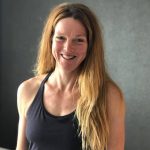 STACY T. SIMS, MSC, PHD, is a forward-thinking international exercise physiologist and nutrition scientist who aims to revolutionize exercise nutrition and performance for women.
STACY T. SIMS, MSC, PHD, is a forward-thinking international exercise physiologist and nutrition scientist who aims to revolutionize exercise nutrition and performance for women.
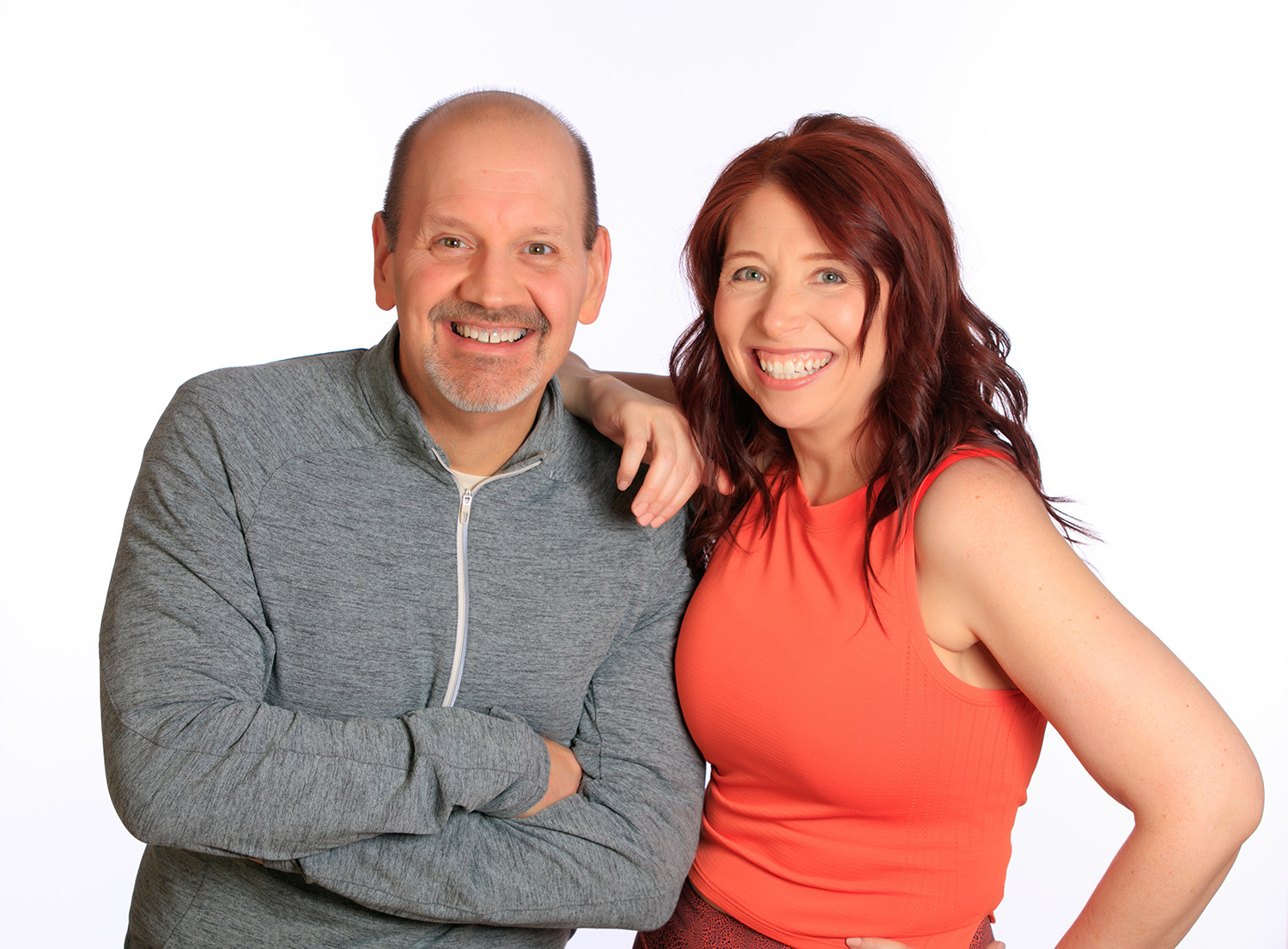
Subscribe
Keep up with all the Peloton news!
